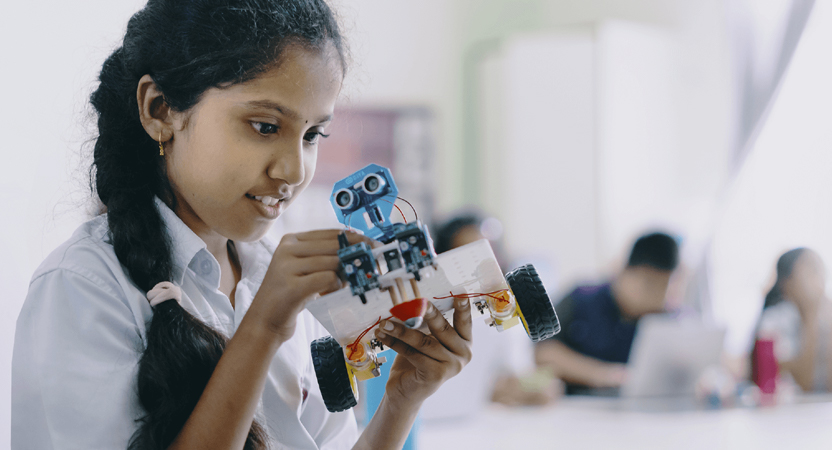Exploring the scope and importance of STEM education in India as outlined in the National Education Policy 2020.
Objectives of STEM Education as per NEP 2020
| Multidisciplinary Approach | Critical Thinking |
| Promote a holistic understanding of science, technology, engineering, and mathematics. | Develop problem-solving skills and the ability to think critically. |
| Innovation | 21st Century Skills |
| Foster a culture of innovation, creativity, and entrepreneurship | Equip students with the skills needed to thrive in the modern, technology-driven world. |
Importance of STEM Education in the 21st Century
| Global Competitiveness | Economic Growth | Societal Challenges |
| STEM skills are crucial for India to remain competitive in the global economy and drive technological innovation. | STEM-related industries and jobs are key to India’s economic development and creating employment opportunities. | STEM education helps address pressing issues like sustainability, healthcare, and infrastructure development. |
Current Status of STEM Education in India
Opportunities and Challenges
While India has made progress in STEM education, there are still significant gaps in access, quality, and participation, especially for underrepresented groups.
-
- Strong foundation in technical education
-
- Rapid growth in STEM-related jobs
-
- Gender and socioeconomic disparities in STEM fields
-
- Need for more hands-on, interdisciplinary learning
Challenges in Implementing STEM Education
| Infrastructure | Teacher Training |
| Lack of well-equipped STEM labs, learning resources, and technology in many schools. | Shortage of qualified STEM teachers and limited professional development opportunities. |
| Curriculum Reform | Equity and Access |
| Outdated curricula and assessment methods that do not emphasize practical, interdisciplinary learning. | Ensuring equal opportunities for students from diverse backgrounds, especially in rural and underserved areas. |
Strategies for Effective STEM Education Delivery
| Curriculum Reforms | Teacher Professional Development | Technology Integration |
| Develop an integrated, project-based STEM curriculum that emphasizes critical thinking and problem-solving. |
Invest in high-quality training and continuous support for STEM teachers. |
Leverage digital tools and resources to enhance STEM learning experiences |
Role of Stakeholders in Promoting STEM Education
| School | Government | Industry Collaborate | Community Raise |
| Implement STEM- focused curricula and create engaging learning environments. |
Increase funding, policies, and initiatives to support STEM education nationwide. |
with educational institutions and provide real-world learning opportunities | awareness, provide mentorship, and foster a culture of STEM enthusiasm. |
Conclusion and Future Outlook
1.Holistic Reform : A comprehensive, multifaceted approach to transforming STEM education in India.
2.Inclusive Access : Ensuring equal opportunities and removing barriers to STEM education for all students.
3.Innovative Future : Equipping the next generation with the skills and mindset to drive India’s progress in science, technology, and innovation.




